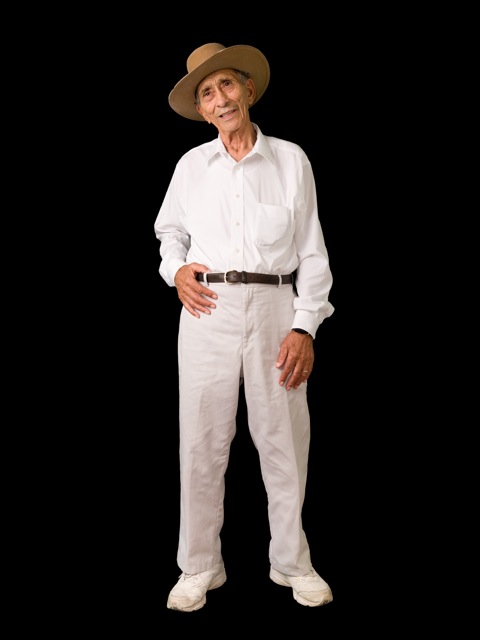Earl Barthé
Earl Barthé was a fifth-generation architectural artisan who created architectural decorative plaster works.

Courtesy of Documentary Arts
Earl Barthé. Govenar, Alan
Craftsman Earl Barthé, one of New Orleans’s best-known and most talented plasterers, worked in the field for more than seventy years. Having worked in buildings ranging from St. Louis Cathedral to the Superdome, Barthé played a crucial role in helping New Orleans rebuild after Hurricane Katrina. Recognizing his plaster work as a form of art, the New Orleans Museum of Art honored Barthé by including his work in a 2002 exhibition. Three years later, the National Endowment for the Arts recognized his contribution to the traditional arts with a National Heritage Fellowship.
Earl Antoine Barthé was born in New Orleans on June 6, 1922, to Clement and Eunice Barthé. A self-identified Creole of Color, Barthé executed decorative plaster and stucco work that reflected an array of French, Spanish, Anglo-American neoclassical, and African American aesthetics. Like many folk artists, Barthé learned his craft from his father and passed it on to his children. In fact, the first plasterer in the Barthé family was Earl’s great-great-grandfather, Leon Barthé, who came to New Orleans from Nice, France, after stopping in Haiti to marry. Even his sister, who went on to be an international opera singer, worked at plastering in her younger days. In fact, he notes, “plastering and music sort of rhyme.” He adds, “You run the mold and then you place the dentils, those little square things that are cast and placed in the mold. It all has to be in tune.”
The work of Earl Barthé was featured at the New Orleans Museum of Art in an exhibition titled Raised to the Trade: Creole Building Arts in New Orleans (2002–03). An art critic writing in the Times-Picayune pointed out that the exhibition reclaimed the Renaissance-era connection between sculptural architectural ornamentation and skilled craftsmanship that had nearly been lost in the United States. In 2001, Earl Barthé and his family were featured as master artists at the Smithsonian Folklife Festival.
Barthé taught young people these endangered skills and initiated his own apprenticeship program in decorative plaster and stucco work. In 2005, Barthé lost his home during Hurricane Katrina. After a brief stay in Texas, he returned to his home town to assist with the city’s rebuilding efforts. He died at his New Orleans home on January 11, 2010.
Adapted from a biography provided by the National Endowment for the Arts.
